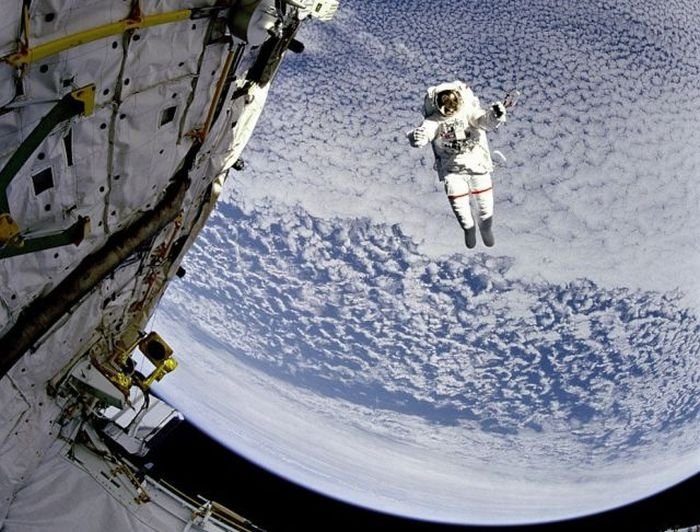|
|
Spacewalk
|
NASA planners invented the term extra-vehicular activity in the early 1960s for the Apollo program to land men on the Moon, because the astronauts would leave the spacecraft to collect lunar material samples and deploy scientific experiments. To support this, and other Apollo objectives, the Gemini program was spun off to develop the capability for astronauts to work outside a two-man Earth orbiting spacecraft. However, the Soviet Union was fiercely competitive in holding the early lead it had gained in manned spaceflight, so the Soviet Communist Party, led by Nikita Khrushchev, ordered the hasty conversion of its single-pilot Vostok capsule into a two- or three-person craft named Voskhod, in order to compete with Gemini and Apollo. The Soviets were able to launch two Voskhod capsules before the first manned Gemini was launched.
The Soviets' avionics technology was not as advanced as that of the United States, so the Voskhod cabin could not have been left depressurized by an open hatch; otherwise the air-cooled electronics would have overheated. Therefore a spacewalking cosmonaut would have to enter and exit the spacecraft through an airlock. By contrast, the Gemini capsule's avionics were designed so the cabin could be exposed to the vacuum of space when one of two large hatches was opened, so no airlock was required, and both the spacewalking astronaut and his companion command pilot were in vacuum during the EVA. Due to the different designs of the spacecraft, the American and Soviet space programs define the duration of an EVA differently. The Soviet (now Russian) definition is the time when the outer airlock hatch is open and the cosmonaut is in a vacuum. An American EVA begans when the spacewalking astronaut has at least his head outside of the spacecraft.
As they had with the first satellite and first man in space, the Soviets again stunned the world on March 18, 1965 with the first EVA (commonly referred to as a "space walk") performed by Alexey Leonov from the Voskhod 2 spacecraft, for 12 minutes outside the spacecraft. Leonov had no means to control his motion other than pulling on his 50.7-foot (15.5 m) tether. After the flight, he claimed this was easy, but his space suit ballooned from its internal pressure against the vacuum of space, stiffening so much that he could not activate the shutter on his chest-mounted camera.
At the end of his space walk, the suit stiffening caused a more serious problem: Leonov had to re-enter the capsule through the inflatable cloth airlock, 3.96 feet (1.21 m) in diameter and 8.25 feet (2.51 m) long. After his spacewalk, he improperly entered the airlock head-first and got stuck sideways. He could not get back in without reducing the pressure in his suit, risking "the bends". This added another 12 minutes to his time in vacuum, and he was overheated by 1.8 °C (3.24 °F) from the exertion. It would be almost four years before the Soviets tried another EVA. They misrepresented to the press how difficult Leonov found it to work in weightlessness, and concealed the problems encountered until after the end of the Cold War.
|
|









